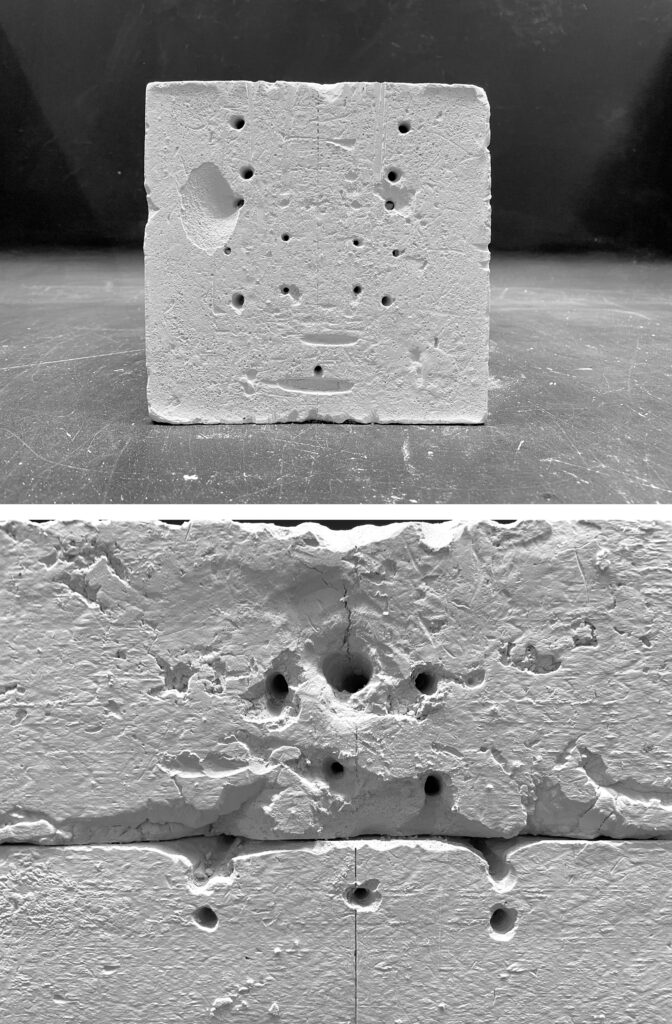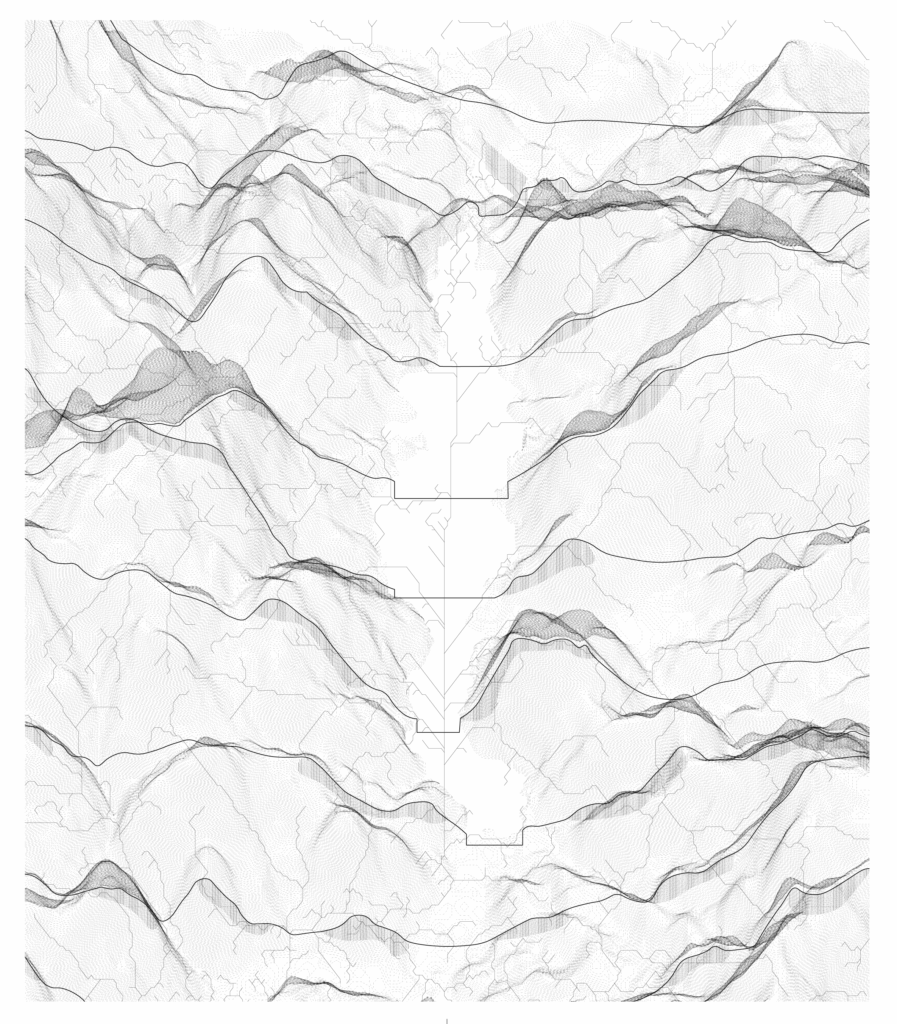INDETERMINACY AS AN ACTION
The second analytical exercise reimagines the site as a landscape in a continuous state of inscription. A pure plaster cube is cast as an abstraction of the site — a blank canvas for destruction and transformation. Subjected to external forces – hammering, scratching, erosion, and pulling – the cube serves as a material archive, recording the violent anthropogenic actions imposed upon the land.

These landscape scars, frozen in physical form, embody the cumulative impact of repetitive alterations. The ultimate fate of the cube – disintegration – mirrors the trajectory of exploited landscapes, where continuous extraction leads to the erosion of both form and function. The final inscriptions on the cube symbolize the unpredictability of these anomalies, reinforcing the concept of territorial Indeterminacy as a spatial condition.
Beyond immediate industrial alterations, the Çan region is shaped by millennia of wind erosion and water runoff, carving an intricate network of channels across the terrain. The mine’s surrounding basin functions as a natural collector of minerals and pollutants, accumulating acidic residues and heavy metal particles transported by runoff from elevated areas. By mapping the basin, key intersections emerge – zones where surface water runoff, wind erosion and landslides converge. These locations become critical sites of environmental vulnerability, where toxic infiltration into the landscape is most pronounced.

Acid lakes, comparable to other anthropogenically altered water bodies, act as repositories of industrial excess, encapsulating the ephemerality of the Çanakkale landscape. Through a multi-scalar analysis, these lakes are revealed as captured entities, accumulating evidence of human-induced transformations. By overlaying the slow, natural carving of the terrain with rapid industrial modifications, the study traces situational indeterminacies — where landscape alterations unpredictably intersect with territorial systems.
